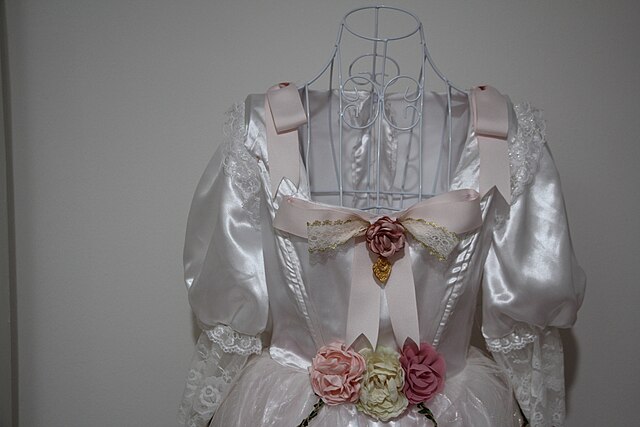Lolita fashion is a subculture from Japan that is highly influenced by Victorian clothing and styles from the Rococo period. A very distinctive property of Lolita fashion is the aesthetic of cuteness. This clothing subculture can be categorized into three main substyles: 'Gothic', 'Classic', and 'Sweet'. Many other substyles such as 'Sailor', 'Country', 'Hime' (princess), 'Guro' (grotesque), 'Qi' and 'Wa', 'Punk', 'Shiro' (white), 'Kuro' (black), and 'Steampunk' Lolita also exist. This style evolved into a widely followed subculture in Japan and other countries in the 1990s and 2000s and may have waned in Japan as of the 2010s as the fashion became more mainstream.
Angelic Pretty, a shop specializing in lolita fashion
Handmade Lolita dress
Musician Mana, pictured at a 2019 fashion show for his brand Moi-même-Moitié, is credited with helping to popularize Gothic Lolita.
Hime Lolita
Victorian fashion consists of the various fashions and trends in British culture that emerged and developed in the United Kingdom and the British Empire throughout the Victorian era, roughly from the 1830s through the 1890s. The period saw many changes in fashion, including changes in styles, fashion technology and the methods of distribution. Various movement in architecture, literature, and the decorative and visual arts as well as a changing perception of gender roles also influenced fashion.
1844 fashion plate depicting fashionable clothing for men and women, including illustrations of a glove and bonnets
Illustration depicting fashions throughout the 19th century
Picture of 1850s evening dress with a bertha neckline
Engageants








